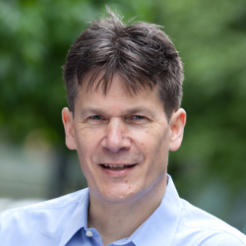Volunteering is at a ten-year high with 26 per cent of people carrying out some volunteering in the last three months, and more men are volunteering than women, according to new research by nfpSynergy.
The research consultancy’s report, The New Alchemy, published today, analyses trends in volunteering over the past decade and people’s motivations for giving their time.
Based on regular polls of 1,000 UK adults carried out by phone from January 2003 and January 2012, and online from May 2011, it shows 26 per cent of those surveyed said they had volunteered in the last three months in July 2014, a seven percentage point increase since the research began.
This is a high last reached only once before in the last decade, in May 2013, before volunteering dropped to 21 per cent in September last year.
Researchers found that 27 per cent of men said they had volunteered in the last three months compared to 26 per cent of women.
Figures show women have only polled lower than men twice in the last decade and have an average volunteering level of 24 per cent over the last three years, compared to men’s 21 per cent.
In 2005, 25 per cent of women said they volunteered, compared to just 13 per cent of men.
The latest poll also shows that the number of young volunteers has continued to increase with 33 per cent of 16 to 24-year-olds saying they give their time, which is more than double the level in 2005 of 15 per cent.
The research shows that regular worshippers are more than twice as likely to volunteer as others, with 41 per cent giving their time compared to 19 per cent of non-regular worshippers.
Broadsheet readers are also more likely to be volunteers with 32 per cent giving their time, compared to 21 per cent of tabloid readers.
Rates of volunteering vary by socio-economic class, the report says, with more affluent people still more likely to volunteer. This is supported by findings from the Cabinet Office’s Community Life survey, which found 36 per cent of people in the least deprived areas regularly volunteer, compared to 19 per cent of people in deprived areas.
The report also looks at people’s motivations for volunteering and a key reason is “the 21st century significance of voluntary experience for employability”.
“There is little doubt that in the current age of austerity, together with more long-standing changes in access to higher education and the competitiveness and composition of the job market, has pushed the salience of employability to the fore,” the report says.
Joe Saxton, co-founder of nfpSynergy, said: “The number of men volunteering doubles in a decade. The number of young people volunteering doubles in a decade. These are extraordinary changes.
“It’s a really encouraging sign to see that so many more young people are volunteering and that the gap between men and women is narrowing, but all too often charities don’t think about how they can reach out to these groups. Targeting volunteer opportunities to appeal to different groups is essential to ensuring a steady supply of volunteers and capitalising on the skills they provide.
“The continued increase in volunteering is an encouraging sign, but keeping volunteers involved and engaged is another challenge. Our new report explores more of these trends and offers advice to charities on how they can attract, manage and get the best out of their volunteers.”








